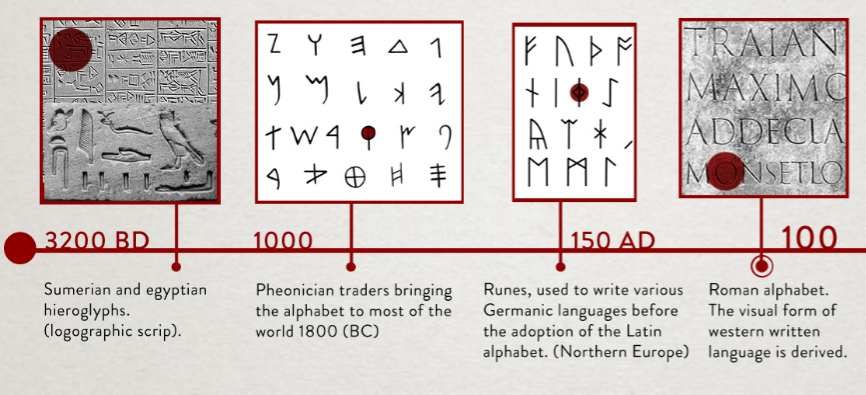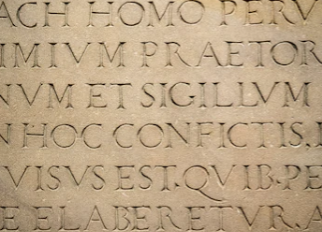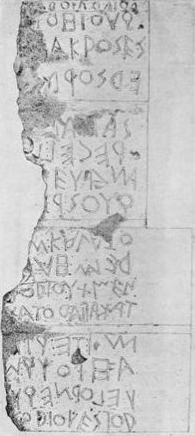Survey #1

As one of the first and fundamental forms of communication, writing, and typography trace their roots even back to the Upper Paleolithic times when cave paintings used symbols as a form of language. However, as the formal history says, writing has been developed by Sumerians around 3,500 B.C. As each civilization advanced, so their need for communication became more complex. From Egyptian hieroglyphics with symbols and ideograms to Ancient Greeks who used the alphabet created by Phoenicians, taken over by Romans afterward.
As there were many different civilizations evolving in typography, I will focus on the beginning of Latin. Latin had the largest impact on the world, with some of the upper case typography created at the time, which is still used to this day!

Have you ever been reading a book or an article and stumbled upon a word that looked familiar, but you weren’t too sure what it actually meant? Well, there’s a good chance that it has a Latin root word.
Latin was the parent language of a number of European languages spoken today, the most prominent being Italian, Spanish, Portuguese, French, and Romanian. It’s no surprise that bits of Latin appear in these languages, even after the Western Latin speaking half of the Roman empire fell in 476 AD, Latin continued for over a millennium as the language of the Roman Catholic church, science, philosophy, medicine, the language of law and more.
Developed from the Etruscan alphabet at some time before 600 BC, it can be traced through Etruscan, Greek, and Phoenician scripts to the North Semitic alphabet used in Syria and Palestine about 1100 BC.

The earliest inscription in the Latin alphabet appears on the Praeneste Fibula, a cloak pin dating from about the 7th century BC.

The very first examples of the Latin alphabet resemble the Etruscan alphabet. Nearly all the letters were adopted with the same phonetic values and shapes. The direction of writing was like Etruscan, either right-to-left, boustrophedon, or even left-to-right for about a hundred years during the 6th century BCE. Slowly the Latin alphabet became increasingly standardized. Writing direction settled on left-to-right toward the 5th or 4th century BCE, and letter shapes became more or less the same in Latium. By Rome’s Republican period, the Latin alphabet has evolved to the modern form.

“A View of Latin Typography in Relationship to the World by Peter Biľak.” Typotheque, https://www.typotheque.com/articles/a_view_of_latin_typography.
Ancient Scripts: Latin, http://www.ancientscripts.com/latin.html.
Britannica, The Editors of Encyclopaedia. “Latin Alphabet.” Encyclopædia Britannica, Encyclopædia Britannica, Inc., https://www.britannica.com/topic/Latin-alphabet.
“The History of Typography and Its Journey Through Art.” Widewalls, https://www.widewalls.ch/typography-history-art/.
